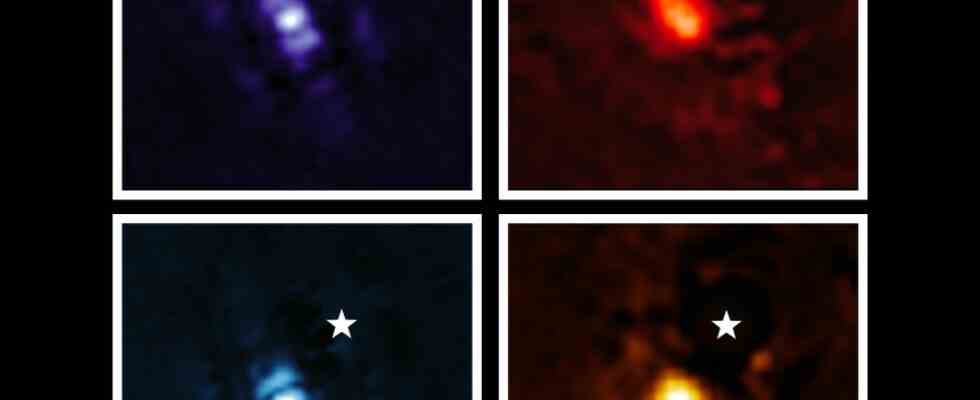That James-WebbThe Space Telescope has captured its first direct image of an exoplanet. It’s not the first such recording at all, already that Hubbletelescope had taken such pictures. Nevertheless, the picture is considered a milestone because it shows the amazing potential of the Webb-Telescopes shows what the exploration of such worlds is concerned.
The exoplanet called HIP 65426 b, around 350 light-years from Earth, is what is known as a gas giant: It does not have a solid, rocky surface, similar to Jupiter in the solar system. However, it has about six to eight times its mass. According to NASA, it is only 15 to 20 million years old, much younger than the 4.5 billion year old earth.
Countless planets outside the solar system have been identified in recent years, and more than 5,000 have been officially confirmed. However, the vast majority have been identified using indirect methods, such as noting that the brightness of the central star changes periodically, indicating that a planet is passing by. Or by measuring a slight wobble of the star caused by its planet’s gravity. Direct images of exoplanets are still rather rare, only about two dozen have been imaged so far, in very modest quality.
The exoplanet is around 1000 degrees Celsius hot
Also the current pictures of the Webb-Telescopes wouldn’t really make a great impression in a travel brochure – and yet they are impressive considering the difficulty of making such pictures at all. They only show the planet with a few pixels, the white star marks the position of the hidden central star.
The recordings were made as part of a major international collaboration led by Sasha Hinkley of the University of Exeter. The team has from the measurements reported in a not yet peer-reviewed preprint. The telescope imaged the planet with its two infrared instruments, Nircam and Miri, each at two different wavelengths. The bluish images are from Nircam, the reddish ones from Miri, reflecting the fact that Miri works at longer wavelengths in the mid-infrared, while Nircam measures close to the edge of the optical spectrum. The black lines in the Nircam images are technical artifacts.
Both cameras are equipped with so-called coronagraphs that block out the star’s bright light. There is no other way to image exoplanets, not even if they are 100 times further from their star than Earth is from the sun, as in the current case – the light of the exoplanet is more than 10,000 times weaker than that of its star. And this despite the fact that it is a very hot, bright specimen. Its temperature is around 1000 degrees Celsius, about as hot as a candle flame.
The planet has already been imaged by the Very Large Telescope in Chile, but the Webb shows new details, allowing its mass and size to be determined more accurately than before. In the future, the telescope is likely to measure many other, including smaller, exoplanets. Another team recently reported that with the help of the Webb carbon dioxide for the first time detected in the atmosphere of an exoplanet.

